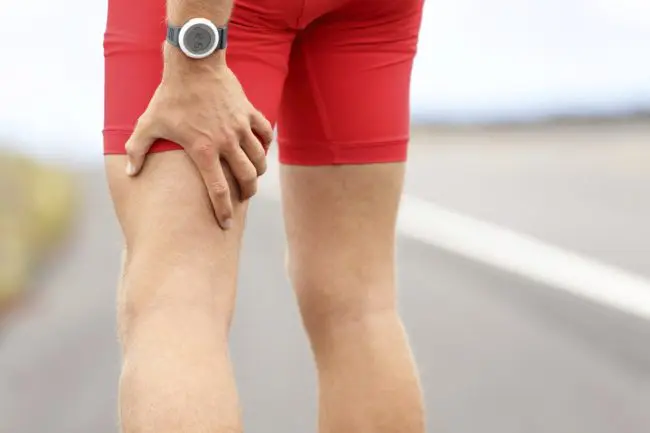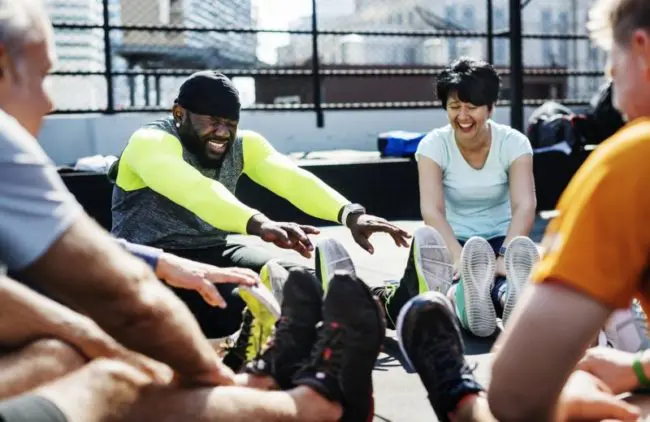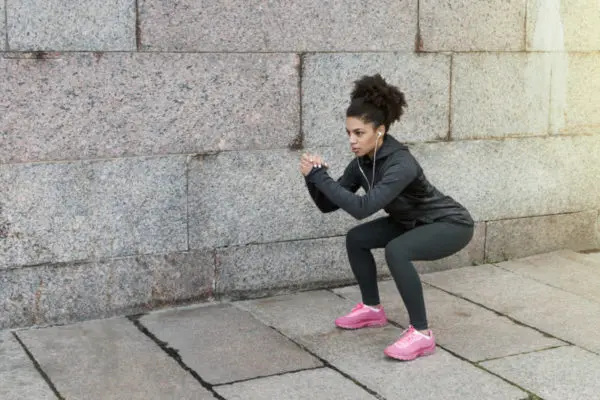Warm Up for Running
Runners should complete a warm up prior to athletic events to prepare the body for movement and stress. The reason why you do a warm up is to increase the blood flow to the muscle that will be working and increase the core temperature while incrementally increasing the intensity of the activity. This allows the body to be prepped physiologically for running in training or at an event. Usually, warm ups should start with a generalized activity and then progress through low intensity aerobic work that is specific to the upcoming workout. When the run is going to be more intense or a longer distance, more time should be spent on the warm up but 10-20 minutes will usually be adequate. For older runners, think of it as breaking off the rust.
More specifically, a proper warm up can improve athletic performance by enhancing oxygen delivery, loosening muscles/joints, increasing the speed of nerve impulse transmission, improving the rate of force development and maximizing strength and power. Warm-ups should be consistent with the needs, goals and abilities of an athlete and should be considered a major part of every training session or event. A well-designed warm up procedure will not only improve performance, but it will also reduce the risk of injury.
Classic Warm Up
Traditionally, it was taught that a warm up consists of two parts with the first part involving a low to moderate intensity aerobic exercise, like jogging or cycling, followed by several minutes of static stretching. The second part is more specific to the sport at hand and generally consists of lower intensity movements performed in the sport. Again, the point of this is to allow the body to adapt to the demands that will be placed during the sport or activity without causing undue fatigue. For running, this method of preparation could consist of walking for a few minutes followed by stretching the major muscles of the legs.

Static stretching as Warm up for Running
Despite static stretching being classically seen as part of a warm up, recent research has shown that static stretching may cause a decrease in the amount of power produced during an athletic event. This decrease in power output is mostly important in faster races, but it can also be problematic for people that are trying to perform at an elite level. Some individuals claim that static stretching will predispose runners to injury, but this has not been proven by research.
It must be noted that warming up and stretching are two different things. The point of static stretching is to increase flexibility. Because of the possible decrease in power output, many scientists, coaches and athletes believe that it is wise to eliminate static stretching from warm up activities. Also, pre-event static stretching has no evidence to show that it prevents injury. Even more importantly, there is evidence to show that it decreases athletic performance, such as force production, power performance, strength endurance, reaction time and running speed. It is unsure how long this effect lasts but some research has shown that the effects may last up to one hour.
Organizations like the American College of Sports Medicine (ACSM) and the National Strength and Conditioning Association (NSCA) state that pre-event static stretching can decrease athletic performance.

Static stretching is mostly meant to increase flexibility and lengthen tight muscles. And because the movement in the hips and legs is limited during running, it is not essential for a runner to be extremely flexible. Since it is not necessary to be able to kick someone in the head while running, it decreases the need to do static stretching.
Dynamic Warm Up for Running
Running is a dynamic activity which involves the contraction and relaxation of muscles as they move through space, but runners hardly ever use the full range of motion of the joints. When runners start to increase their training volumes, they may experience changes in joint motion due to changes in muscle flexibility. Unfortunately, aging is also connected to decreased muscle flexibility. So there needs to be some focus on mobility.

While static stretching is one option, research suggests that at least some of the warm up should include dynamic movement. Dynamic stretching is accomplished by moving a joint through the complete range of motion that may be used during an athletic activity. These are controlled movements that help loosen the muscles and joints. A dynamic warm up can be thought of as movement preparation because it can be used to maximize active ranges of motion while developing body awareness, exciting the nerve/muscle connections and increasing body temperature as well as motivating the athlete.
Appropriate warm ups for should reflect activities done during the sport. Because the main skill involved in running is running itself, there is less need for activities that encourage explosive cutting. There is also no lateral movements, so side-to-side movements like shuffles or carioca (weave step or grapevine) are also not necessary.
Examples of Dynamic Warm Ups for Running
Generalized aerobic activity that lasts about 5-10 minutes is still the right place to start. For runners, this can obviously include jogging, but a warm up can be also used as an opportunity to cross-train. Walking briskly, marching, or cycling on a stationary bike can also be used, but another fantastic warm up can be skipping rope.
After the initial general activity, one way of ramping up the intensity is do strides or pick-ups. This would involve gradually increasing to a faster speed over about 30 secs or 100 yards with a deceleration in the last 5 seconds or so. Runners new to using strides can start by doing 4 strides during a warm up and gradually building to do 8 strides in the warm up over many training sessions. When warming up for a race, time the strides to be finished about 15 minutes before the race starts. Strides help to prime your muscles and the brain that controls them to run faster.
Strides can be followed by glute activation and dynamic stretches. Because gluteal amnesia is a problem in runners, glute activation exercises can be used to prime the pump and get the glute firing before a run. Single leg glute bridges can help activate the gluteus maximus and walking hip hitches can stimulate the gluteus medius and eliminate crossover gait while running. Activating the glutes can go a long way toward preventing injury.
Strides
Glute Activation
Dynamic stretches and exercises can include the inchworm, Spiderman crawl, scorpion, butt kicks or specific types of skipping. I will include examples of these Dynamic Stretches below.
A specific dynamic warm up for running could include the following exercises each performed over 30 feet or so: toe walk (walk on toes), heel walk (walk on heels), ankle taps, inchworm and Spiderman Crawl. The Scorpion can then be used for improved back flexibility. Next, the following exercises can be worked over about 100 ft: Power Skips, A-Walk or A-Skips and B-Walk or B-Skips. Athletes can repeat these dynamic exercises for a more thorough warm up. Each of these exercises will be included below.
Obviously, you should practice doing these warm ups because the skips can be especially difficult. And while you can change up your warm up regularly, it is a good idea to have a good, consistent dynamic warm up before you run a race.
Remember that planning you warm up and structuring it can help you not only prevent injury but can improve your performance and focus. Below is a short recap on the order for clarity.
1. General Aerobic Activity
2. Strides
3. Glute Activation
4. Dynamic Stretching
Be sure to be consistent with your warm-ups. You should be doing similar warm ups for each type of training that you are doing and you should have practiced your warm up before you are warming up for a race.
Article Featured in Toledo Roadrunners Club Footprints – Volume 45, Issue 9 (September 2019)
